To hijack an old phrase, the Eastern Redbuds don’t know if they are coming or going. The spring processional of the Redbud (Cersis canadensis) is usually quite predictable: First, warm weather. Next, a profusion of SMALL edible pink blossoms. Then, heart-shaped leaves and later, edible green pea pods. Spates of warm weather have altered the botanical schedule. Some trees are putting on leaves first, others have few blossoms, some appear to be struggling to do both at the same time. Redbuds — they should have been called Pinkbuds — are usually a sign that winter is past. As for foraging, the blossoms are good raw, cooked or pickled. The young pods are edible raw or cooked. To read more about the redbud, click here.
? But is it edible? Russian scientists have, they say, recreated a living, reproducing plant from genetic material some 30,000 years old, Silene stenophylla. The genetic material was found in an old squirrel burrow some 125 feet below the current top layer of permafrost in Siberia. The question of edibility is reasonable because several species of current Silenes are edible, including S. acaulis, S. alba, S. dioica, and S. vulgaris. They are campions. Usually young leaves or shoots are boiled then served with butter. If the plant ends up missing from the lab….
? It was a temperate day for class in Ocala and a wet one in Gainesville but the students arrived and we foraged anyway. While Poor Man’s Pepper Grass is common at the Ocala site, it is usually replaced by Shepherd’s Purse, uncommon elsewhere. This year we did manage to find some of the Pepper Grass, though it really isn’t a pepper or a grass. Gainesville started off in the rain. The location is cluttered with , which is a famine or emergency food and antiseptic. Not a bad plant to know. I also found some sweet clover to chat about. It’s not the same as white or red clover. The warm weather has confused the Eastern Redbuds, above, which usually have flowers first, leaves second. I’ve seen some trees leaving before flowering. But we found some to nibble on. This time I also had something more to say about Sweet Gums, whose contribution to our endeavor is a rubbery sap for gum. However, it also has shikimic acid.
I am not an herbalist, so bear with me; nor am I offering any medical advice. Flu viruses are little chemical conglomerates. Rather than having DNA they have RNA. They need hosts — us — to reproduce. Can’t do it on their own. The virus reproduces by flaking off pieces of its RNA. A protein makes flaking possible by allowing the virus to get out of the cell. If you can inhibit the protein you can reduce or eliminate the reproduction. If you reduce or stop the reproduction you can reduce or stop progression of the flu. That’s where shikimic acid comes in. It inhibits the protein that helps the virus escape from the cell. The next question is where can one find shikimic acid?
The usual answer is from the star anise tree, a common spice that grows in China. Its fruit pods are about 7% shikimic acid by weight. From it is made the medicine we know as Tamiflu. However, there are species in North America that have shikimic acid in usable amounts and have been used to treat the flu.
Sweet Gum bark tea has shikimic acid and has been a recommended treatment by herbalists. (Sometimes old things are new.) Research shows, however, there is more shikimic acid in the Sweet Gum fruit, in particular the infertile seeds. (Fertile seeds are black and have two little wings, infertile seeds are yellow and do not have wings.) The green fruit has been made into a tea or tincture for medicinal purposes. The amount of shikimic acid ranges from about 1.7% to 3 percent. However, there is a potential better source that is far more common.
Researchers in Maine have discovered that pine needles are about 3% by weight shikimic acid. The White Pine has the most among the few they tested, though spruce and hackmatack also have some. As you may expect the exact extraction process was not reported. No one is suggesting pine needle tea as a substantial source of shikimic acid for the flu. But, if I get the flu I think I will indulge in a little pine needle tea.
Other creatures that can get the flu include birds, pigs, ferrets, dogs, cats, horses, seals, whales, mice and recently discovered, bats. While flus tend to be species specific the greatest threat is flus that jump from one species to another, the most common being bird to pigs and from those pigs to humans. Pigs are, so to speak, the middle man. Occasionally, such as with recent bird flu cases, the flu went from bird to humans. When that happens the flu tends to be a deadly disease. The disease has not moderated via the pig in between and what folks usually die of is their body’s massive response to the disease rather than the disease itself… hmmm… think the flu as not so bad but the body never having seen this particular strain before over reacts, fills the lungs with fluid in which you drown or catch pneumonia or the like. This is why some flu strains can be so fatal to young victims. They have strong immune systems. Older folks’ immune systems don’t respond so quickly and they might also have partial immunity. There is some irony in that the common flu used to be called the “old man’s friend” in that it gently killed many. But novel flus are the greatest threat to the young.
Last point, why do most of the flus come out of China? That’s where most of society is still rural and folks live close to their domesticated fowl and swine thus the flu gets a chance to jump species and change. There are 144 or so strains of flu and all of them variations of bird flu. But, it is sentences like the last one that bother me. If all strains of the flu originated with birds how did the whales get the flu? Birds on the beach with seals and from seals to whales? And how do whales give the flu to each other while in all that sea water? Breathing in another’s exhale? Kinda makes ya wonder.
? If you’ve taken a class with me you know I do make fun of wunderkind botanists who think they can describe a plant better than their predecessors thus changing the species name. Two-tooth hairy gets changed to two-tooth whitey, small flower parts Brown gets changed to slope-footed Brown (I still have no idea what slope-footed means.) Then there are botanists who find the slightest difference between plants in one species and get to create a second species. I can think of two examples. Gotu Kola is Centella asiatica. For a long time the local Gotu Kola was thought to be C. asiatica. Then along came genetic testing. The local version is just ever so slightly different, not to the naked eye but to the clear eye of chemical analysis. Thus was born Centella erecta. It is used like C. asiatica. That’s progress and brings me to the Perseas.
There are four Perseas locally: P. humilis, P. borbonia, P. palustris and P. americana. The first and the last are easy to identify. The last one, P. americana, is the avocado of various cultivars. The first, P. humilis, only grows in the upper dry ground in the middle of Florida and is bronze-colored on the under leaf. But the other two were one species previously. Their differences can be minute or blatantly obvious. Here’s how to tell them apart.
First get a microscope… well, not totally necessary but… Generally P. palustris, the Swamp Bay, grows near water or in damp soil and can get 20 to 30 feet high, occasionally more. P. borbonia, the Red Bay, grows where it is less wet and can get to 65 feet. The leaves are aromatic in both species, look very much alike to the naked eye, and are used the same way, as a tea, marinade or flavoring. A #10 hand loop, the mainstay of the forager in the field, is not quite strong enough to tell the difference. 30x works very well.
Under a microscope at 30X the difference is clear. Both species have hair on the petiole, on the main stem on the underside of the leaf, and on the underside of the leaf itself. On the P. borbonia the hairs are sparse and or lay down, think balding and slicked back. On the P. palustris the hairs are many and upright, bushy, think afro. While weather may often make identification characteristics on the petioles difficult the main stem on the underside of the leaf is very consistent. Bushy tiny hairs, P. palustris, slicked down or few hairs, P. Borbonia. Simple perhaps but it took me several years to sort it out. It was also an excuse to buy a specimen microscope.
One other Persea point: I have found P. palustris growing in very dry conditions on high ground around lakes, read no where near damp conditions. Whereas all the P. borbonias I have found have not been near any water. They’ve all been high and dry.
New articles added to the archives: Corn Poppy, Edible Flowers: Part Sixteen, Sweet Gum Tree, Edible Flowers: Part Seventeen, false roselle.
? Burning Tree update: Winter Park, Fla. A 26-year-old Seminole County woman was arrested and charged Feb. 28th with burning down the oldest pond cypress tree in the world. Sara Barnes was charged with a third degree felony in connection with the destruction of the “Senator” a historic, 3,500-year-old cypress tree that collapsed January 16 after burning for several hours in Big Tree Park, Longwood. The tree, named after Florida Sen. M. O. Overstreet, who in 1927 donated the property on which the landmark sits, was about 120 feet tall and its trunk had a diameter of nearly 18 feet. The tree was the main attraction in the park, which was dedicated by President Calvin Coolidge in 1929.
Tipsters said Barnes had taken cellphone pictures of the fire in progress then uploaded them to her laptop, according to officials. Deputies and agents served a search warrant at her home near Winter Park. They seized a cellphone and a laptop which are being processed to see if the photos of the fire can be retrieved. Barnes, a model, told authorities that she and a friend were inside the tree on the early morning of Jan. 16 and lit a fire so they could see better. Police are searching for the acquaintance. Authorities also found methamphetamine and drug paraphernalia in Barnes’s home leading to other charges.
The tree was 165 feet tall before a 1925 hurricane took off its top. Native tribes use the tree as a landmark. A $30,000 fence is going to be installed to protect its remains and a nearby female cypress that is 2,000 years old.
? A reminder: On the weekend of March 23-25 there will be a large herbal conference in Ocala. I will be presenting as will several others more august than I. Because you subscribe to my newsletter you can get a discount. If you register using the code EATTHEWEEDS you will receive a 20% discount off of registration. To register, or learn more, visit www.FloridaHerbalConference.org. There are benefits to being involved. March is a wonderful time for plants and people in Florida.
?My upcome class schedule, subject to change:
Saturday, March 10th, John Chestnut State Park: 2200 East Lake Road, Palm Harbor, FL. 9 a.m.
Saturday, March 17th, Mead Garden: 1500 S. Denning Dr., Winter Park, FL 32789. 9 a.m.
Sunday, March 18th, Florida State College, south campus, 11901 Beach Blvd., Jacksonville, 9 a.m..
Saturday, March 24, Jervey Gantt Recreation Complex, 2390 SE 36th Ave., Ocala, 9 a.m.
Saturday, March 31st, Bayshore Live Oak Park, 23157 Bayshore Rd., Port Charlotte, FL 33980. 9 a.m.
Sunday, April 1st, Dreher Park, 1310 Southern Blvd., West Palm Beach, 33405, 9 a.m.
Saturday, April 7th Lake Woodruff National Wildlife Refuge, 2045 Mud Lake Road, DeLeon Springs, FL 9 a.m.
Sunday April 8th, Wekiva State Park, 1800 Wekiwa Circle, Apopka, Florida 32712, 9 a.m. There is an entrance fee to the park.
Saturday, April 14th, Mead Garden: 1500 S. Denning Dr., Winter Park, FL 32789. 9 a.m.
Sunday, April 15th, Wickham Park: 2500 Parkway Drive, Melbourne, FL 32935-2335, 9 a.m
Friday, April 20th, 20997 174th street, Live Oak, 1 p.m.
Saturday, April 21th, Boulware Springs Park, 7902 S. E. 15th St., Gainesville, 9 a.m.
Sunday, April 22th, Jervey Gantt Recreation Complex, 2390 SE 36th Ave., Ocala, 9 a.m.
Sunday, May 20th, Florida State College, south campus, 11901 Beach Blvd., Jacksonville, 9 a.m.
 ? Green Deane Forum Update: Just over a month old the Green Deane Forum about foraging has some 240 members and over 1,800 posts covering 318 topics ranging from What Is It? to How To Plant Dandelions. The forum is free and a good place to learn, share and get plants identified. To visit the forum click here.
? Green Deane Forum Update: Just over a month old the Green Deane Forum about foraging has some 240 members and over 1,800 posts covering 318 topics ranging from What Is It? to How To Plant Dandelions. The forum is free and a good place to learn, share and get plants identified. To visit the forum click here.

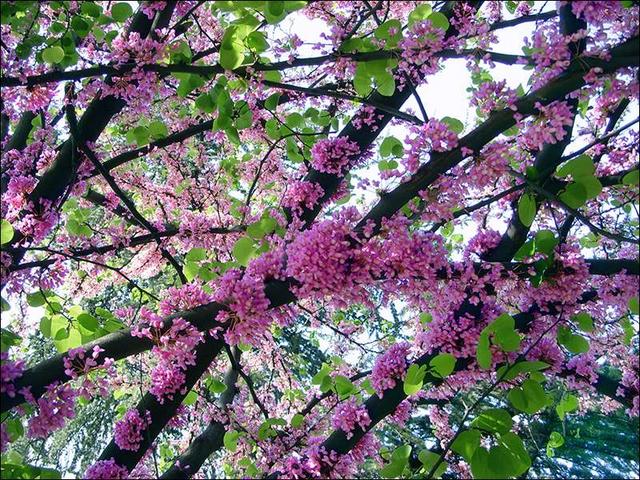
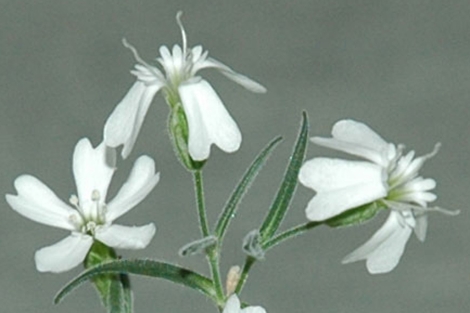
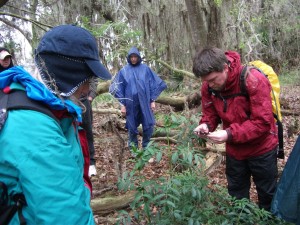
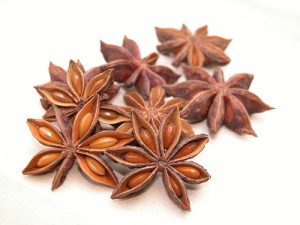
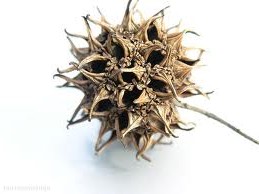
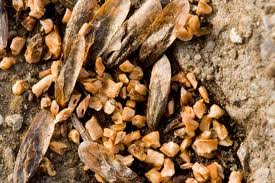
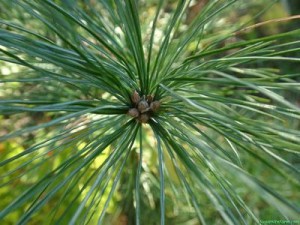
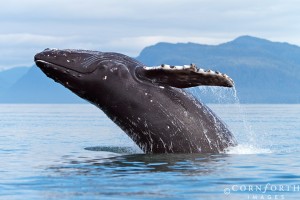

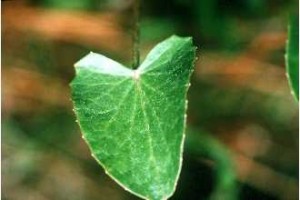
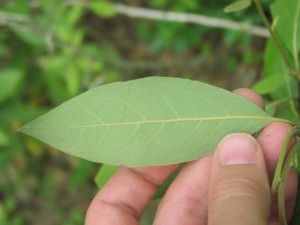
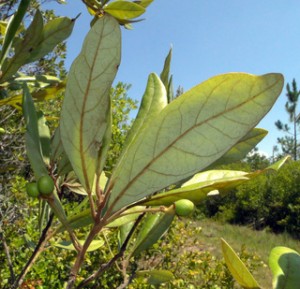

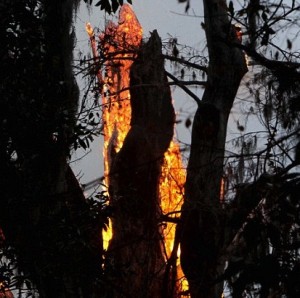
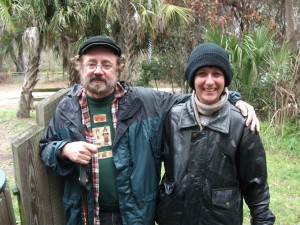

The “H” is a right hand keystroke..
One can reach it with the index finger… I type the title with the left hand and past in the content with the right hand using a mouse. Actually, I am one of the few men you will ever meet who has passed professional tests in typing AND shortnhand.
Mr Deane,
First, let me say thanks for all the valuable information you have shared with the world via your website.
I live in Naples (southwest fla) and have noticed a small plant that looks like a dandelion. It is about 6 to 10″ tall, has several small yellow flowers (1/4″) on stalks 6″ to 10″ tall that become small (1/2″) white puff balls (identical to dandelion except smaller) that blow away with the wind. The leaves are about 4″ long and (lion tooth), again identical to dandelion but much smaller and in the rosette pattern. Is it possible that we have a “dwarf” version of the dandelion here? Have you ever herd of this? Now is the time they are blooming and going to seed. I would love to eat some of the leaves but want some advice. If needed, I might be able to send you a picture. I would love to take some of your classes but am leaving for 6 months on the Appalachian trial 3/13/12. Thanks so much for your response and for all that I have learned from you thus far.
I would start with crepis japonica
Thanks for an excellent newsletter. I especially enjoyed the tip about white pine… I’ve heard other herbalists refer to this plant as a medicine chest! You can bet that if the flu sneaks up on me, I’ll be drinking some white pine tea from some of the needles I collected and dried some months ago.
Did the tree burn her face?
They were probably high… I mean… the tree had a high fence around it, they had to work to not only get over that but inside the tree… and then there is the though process…. “I’m in something that burns, lets light a match so we can see…”
Thanks Deane for your newsletter ….Now photo by Lori Sawyer where is Kelly Fagan..?
Kelly usually has other things to do on the weekends.
wow i love people like you all…: )